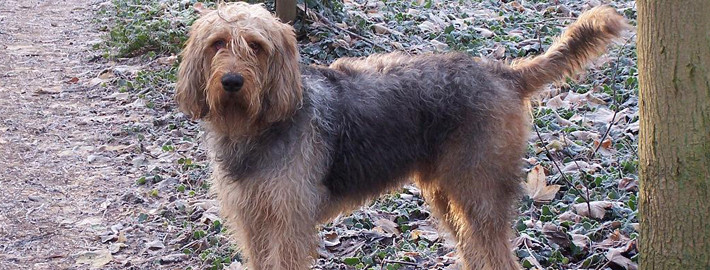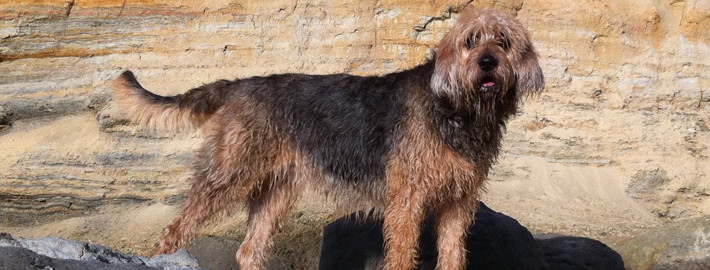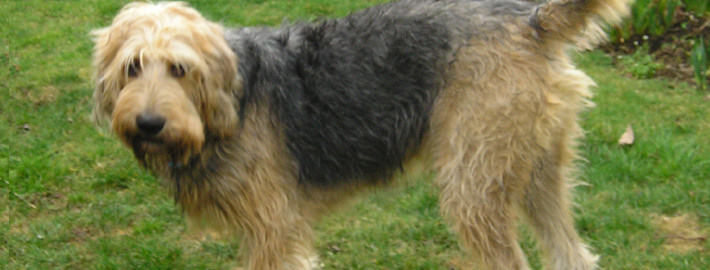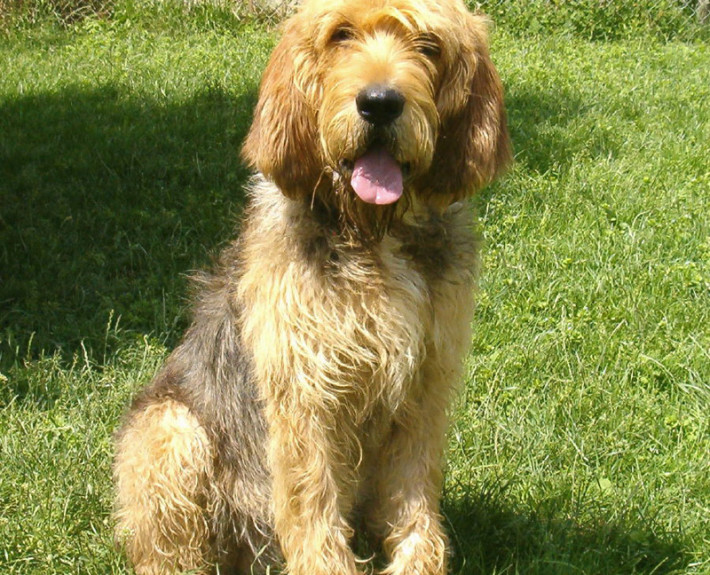What makes the Otterhound Unique?
Considering their numbers are down to about a thousand individuals, Otterhounds are a relatively rare breed of scent hound.
Breed Groups
Page Contents
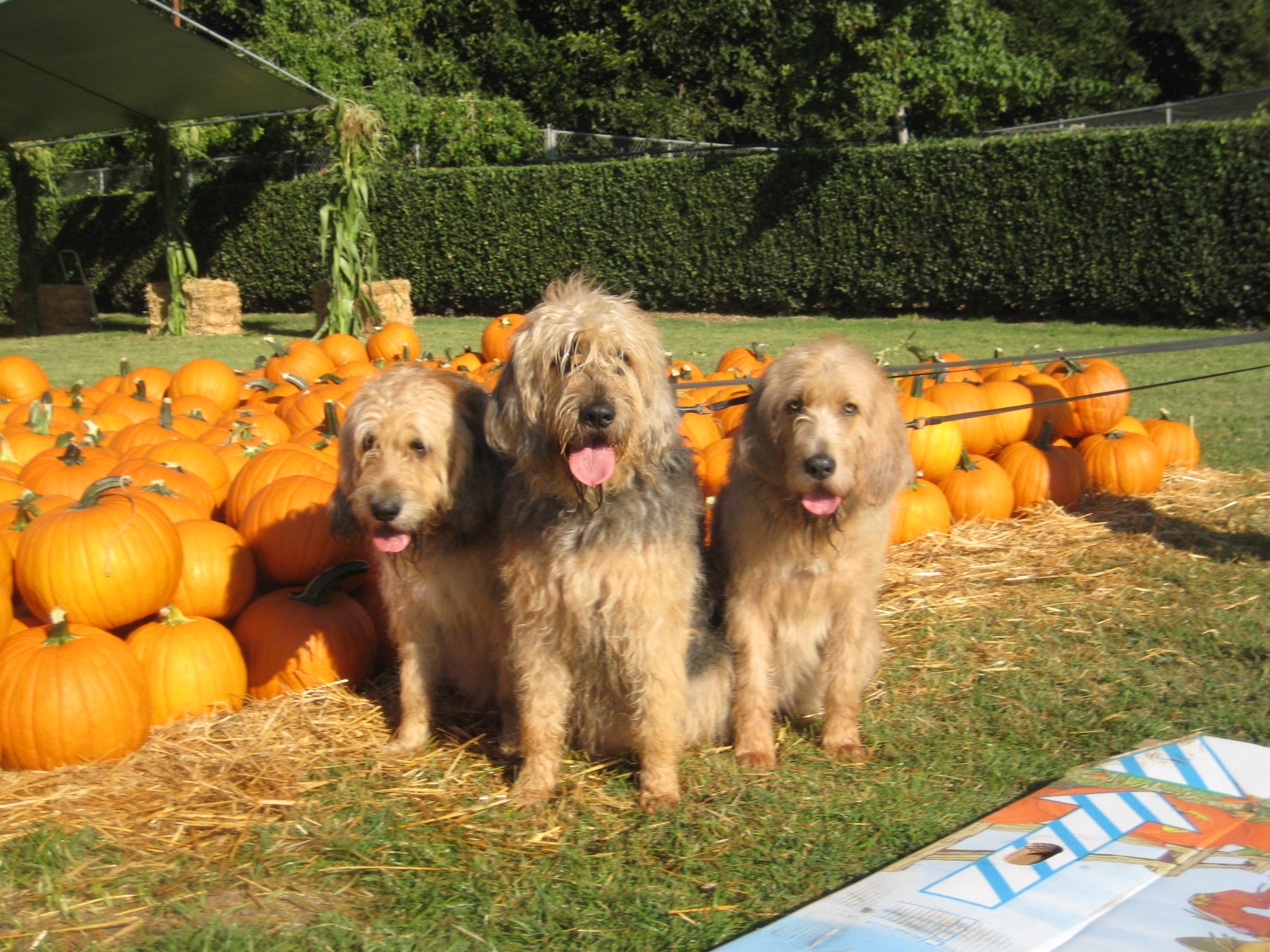
Is the Otterhound Right For You?
Otterhounds are an intelligent breed with a charming, happy-go-lucky personality. These large and somewhat boisterous dogs make incredibly loyal family members if one doesn’t mind an occasionally messy house. Their friendly disposition makes makes them quite good with children and people in general. However, this breed is a poor choice for households containing elderly people or small kids because of the increased potential for accidents in such situations.
In 5 Words
- Even-Tempered
- Amiable
- Friendly
- Boisterous
- Loving
Characteristics
Learn About the Otterhound
Description
General Description
Otterhounds are large, stocky dogs with rectangular bodies. They are somewhat longer than they are tall. Members of this athletic breed also have narrow heads, elongated muzzles, and muscular necks. Thier teeth should meet in a scissors bite. Darkly colored, sizeable snouts are another breed feature that may account for the Otterhound’s excellent sense of smell. These dogs have eyes in colors that complement their coats. It is also typical for members of this breed to have a friendly expression on their faces. Otterhounds additionally have folded ears that hang down beside their heads. These appendages can typically reach the tip of their noses. These dogs have lengthy, high-set tails which taper to a point. Members of this breed additionally possess large, webbed feet that help them swim and get around easily on rough terrain. Sometimes these dogs may have their front dewclaws removed.
Size
Males of this breed should stand exactly 27 inches (69 centimeters) high while females should be 24 inches (61 centimeters) tall. Weight varies by gender with the males of the species being slightly heavier than the females. Female dogs usually weigh between 65 and 90 pounds (29 and 41 kilograms). By comparison, males of this breeds should weigh somewhere between 95 and 115 pounds (41 and 52 kilograms).
Coat
Otterhounds have double coat that measures around 3 to 6 inches (8 to 16 centimeters) in length. The outer layer is coarse, shaggy, and oily but the inner layer is soft and water resistant. These features help protect the breed from chilly waters and the coarse underbrush that is typically found along streams. These dogs also have bushy eyebrows and long facial hair. According the Kennel Club breed standards, “all recognized hound colors are permissible” for members of this breed.
Short History of the Otterhound
Otter hunting dogs have been employed in France and England since the Middle Ages. However, the modern Otterhound came about in18th century England. These dogs were bred for the purpose of keeping otters from eating all the fish in local rivers. The American Kennel Club (AKC) eventually recognized the breed in 1909 as part of their hound group.
Temperament
Otterhounds are an intelligent breed with a charming, happy-go-lucky personality. These large and somewhat boisterous dogs make incredibly loyal family members if one doesn’t mind an occasionally messy house. Their friendly disposition makes makes them quite good with children and people in general. However, this breed is a poor choice for households containing elderly people or small kids because of the increased potential for accidents in such situations.
Otterhounds get along very well with other dogs. Some are even tolerant of cats. Any smaller animals are likely to be regarded as prey and subsequently chased as a result After all, Otterhounds are fearless hunters that will single mindedly trail any interesting smell that crosses their path. In keeping with their original purpose, these dogs are also enthusiastic swimmers.
Members of this breed are not prone to excessive barking but they do have an exceptionally loud voice when they care to employ it. As a result,these dogs are not recommended for living situations where this characteristic could cause problems with the neighbors. Prospective owners should additionally be aware that these dogs have tendency to snore.
Caring for Your Otterhound
General Health
Living about 10 years on average, Otterhounds are prone to a variety of health conditions including thrombocytopenia, hip or elbow dysplasia, hemophilia, and bloat. Obesity can additionally be a problem in members of this breed because these dogs tend to gain weight quickly. Owners should therefore monitor their pet’s eating habits to prevent them from becoming overweight.
Care
Daily
Otterhounds need plenty of exercise on a daily basis. Walking, jogging, and swimming are all good pastimes for members of this breed.
Weekly
Once a week, owners will need to comb out their dog’s fur to keep it from becoming matted. It is also a good idea to check over an Otterhound’s feet and ears on a weekly basis to make sure that no debris has become trapped in either place. Regular tooth brushing is likewise recommended for members of this breed.
Monthly
Heartworm, flea, and tick prevention medications are typically administered once a month to help protect dogs from illness that are caused by such pests.
Grooming & Bathing
Although thoroughly grooming these dogs once a week is recommended, owners shouldn’t be surprised to find themselves performing such tasks on a more regular basis. Most of the time, Otterhounds will wear down their toenails by going about their daily tasks but sometimes a trim is needed to keep injuries from occurring . Members of this breed have a naturally oily coat that helps their skin simultaneously retain moisture and repel water. As a result, bathing these dogs does more harm than good. On the rare occasion when a bath is truly necessary, owners should use a shampoo that is specifically made for rough coated breeds.
Exercise & Training
Otterhounds were not historically kept as pets. They were instead bred for their ability to do their jobs, which means that these dogs can swim for hours at time without rest. This also means that they are not the most obedient of individuals. In fact, Otterhounds are quite stubborn but they not unwilling to learn. These sweet-tempered canines have a desire to please their owners as long as the dogs aren’t allowed to think that they are in charge of their households.. Members of this breed will also take advantage of owners that aren’t as strong willed as they are. In addition to these things, Otterhounds have limited attention spans. Therefore, they learn best when instruction periods take place frequently and sessions are kept short. Patience and consistency are both crucial elements for teaching these dogs to be well-behaved canines.
Roaming tends to be a major problem for members of this breed because they think of nothing more than tracking down whatever intriguing aroma wafts into their nostrils. In city environments, these dogs should be kept on a leash at all times to keep them from running out in traffic. Fenced yards are an ideal place for Otterhounds to play. However, these dog would certainly enjoy some time spent roaming around in the country as long as their humans remain nearby to keep a sharp eye on them.

